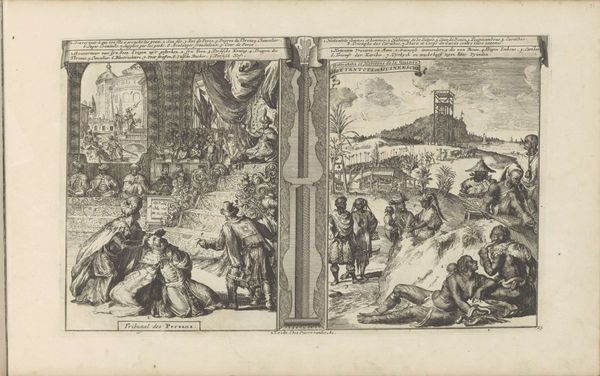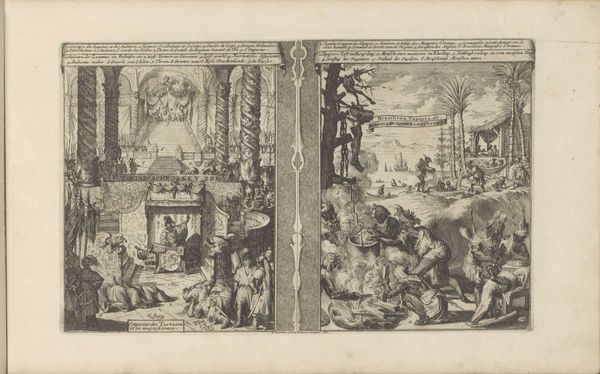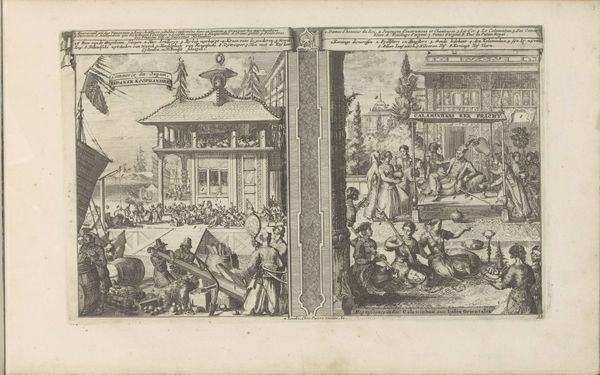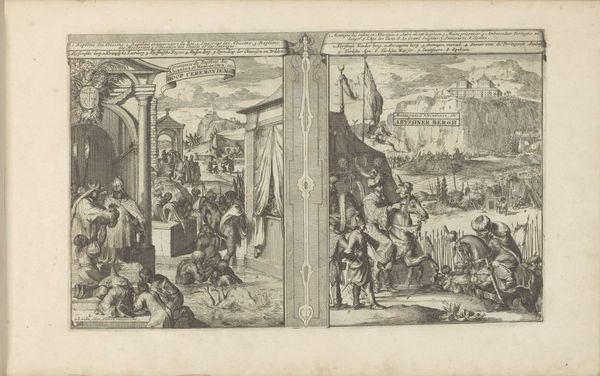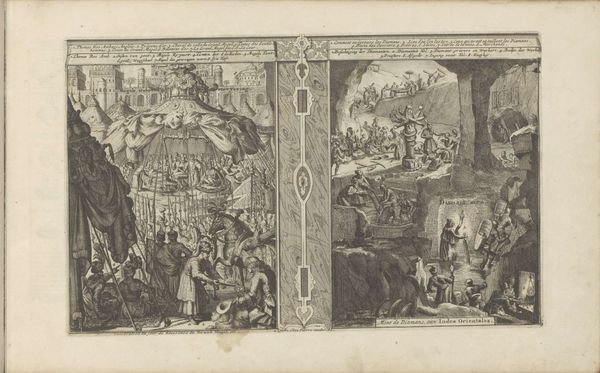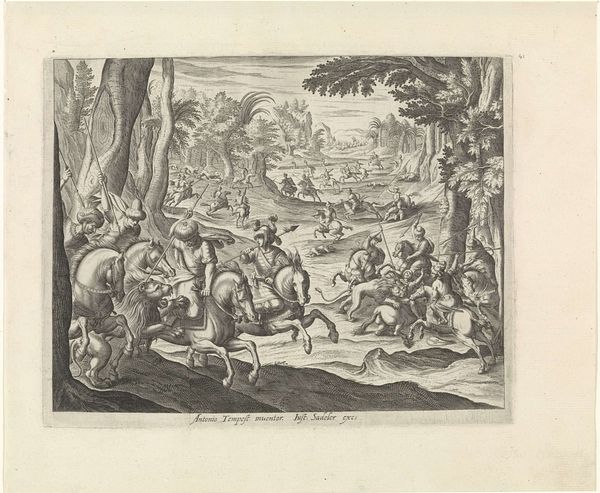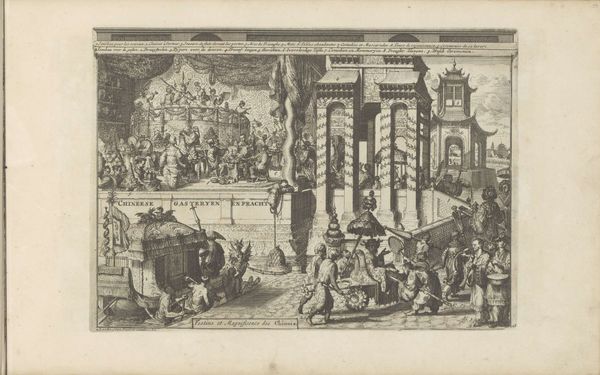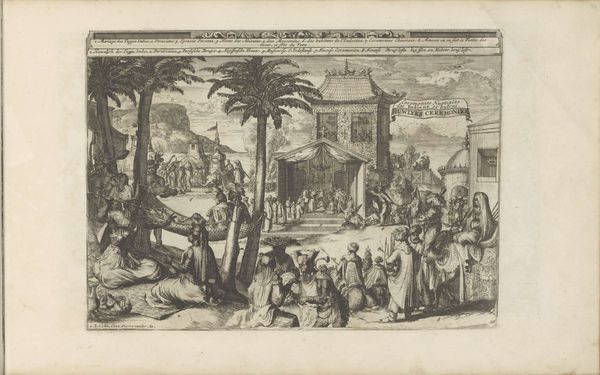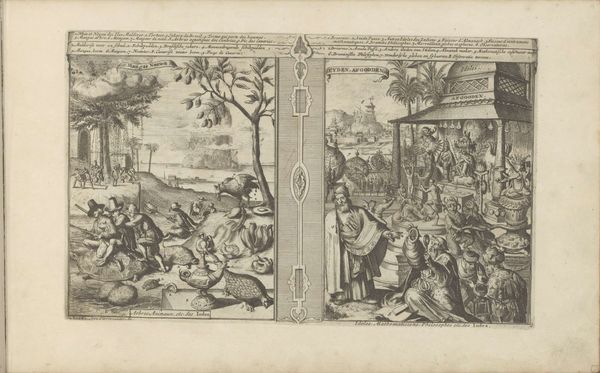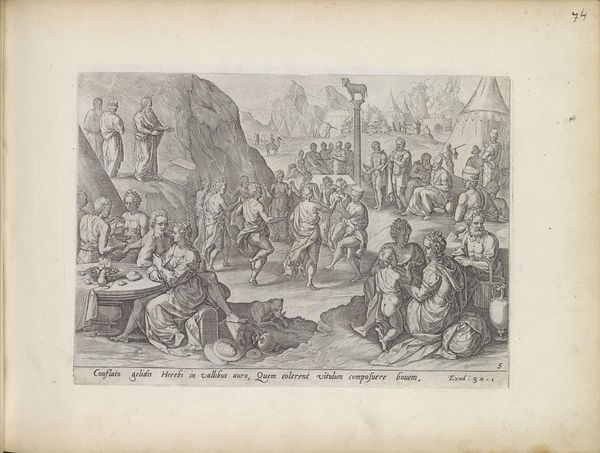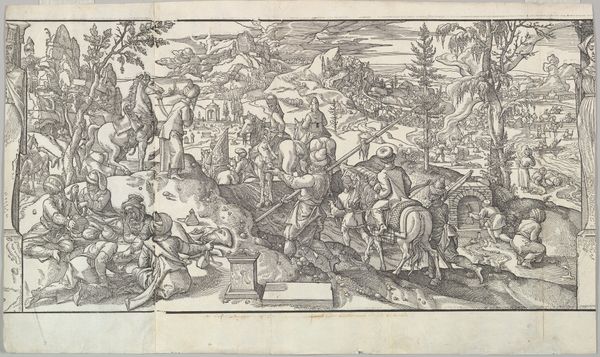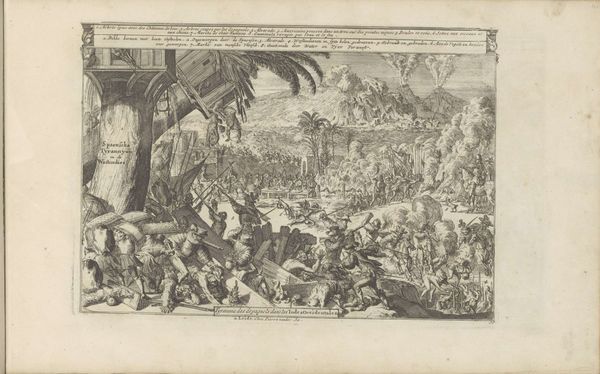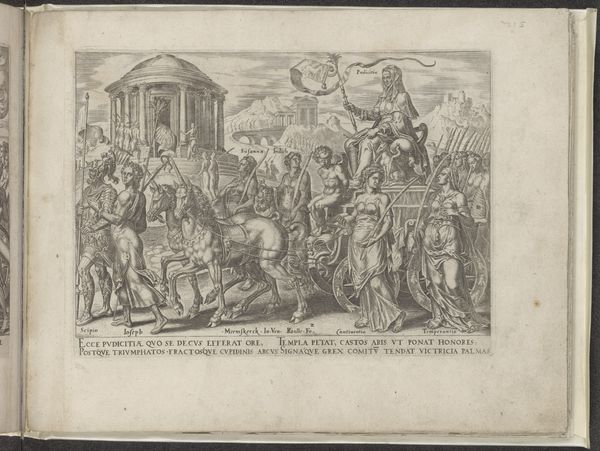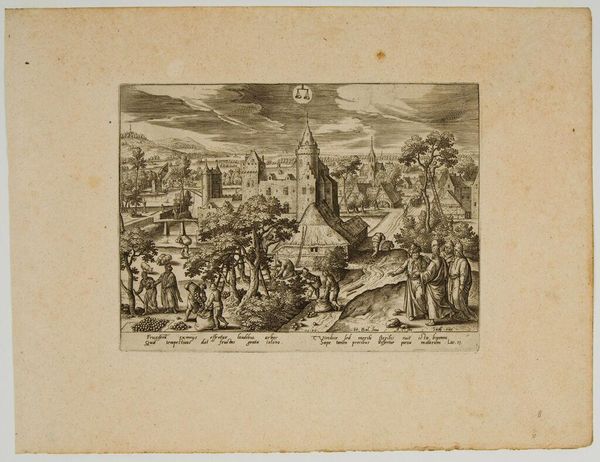
Geneesmeesters in Arclada; Jezuït geschoren door een tolmeester in Golkonda 1682 - 1733
0:00
0:00
romeyndehooghe
Rijksmuseum
print, engraving
#
baroque
# print
#
line
#
genre-painting
#
history-painting
#
engraving
Dimensions: height 210 mm, width 345 mm
Copyright: Rijks Museum: Open Domain
Editor: Here we have Romeyn de Hooghe's engraving, "Geneesmeesters in Arclada; Jezuïet geschoren door een tolmeester in Golkonda," created sometime between 1682 and 1733. It’s incredibly detailed! I’m struck by the division of the scene into two distinct halves, each bustling with activity. What underlying narrative connects them, and how do you interpret this work within its historical context? Curator: This engraving serves as a potent visual commentary on the complex intersection of colonialism, religious power, and cultural exchange during the period of Dutch expansion. The split composition highlights two distinct, yet related, arenas where power dynamics are being negotiated – one perhaps more overtly violent than the other. We have, on one side, the portrayal of medical interventions, framed under the title "Geneesmeesters in Arclada," likely referencing Dutch "medicine men". Do you see how this relates to contemporary discussions around the imposition of western practices upon native cultures? Editor: Yes, the contrast between the figures receiving treatment and the imposing Dutch figures is quite stark. The other side, depicting a Jesuit being shaved, seems symbolic too, a sort of deconstruction or enforced humility. Is this an expression of Dutch anti-Catholic sentiment? Curator: Precisely. By showing a Jesuit being shaved by a tax collector, we are invited to think about the relationship between colonial power and religious authority, it visually dismantles the perceived power of the Catholic church but also criticizes colonial exploitation via the figure of the tax collector. This kind of art often served to mobilize public opinion and reinforce a particular ideological stance, influencing contemporary understanding of complex global dynamics. Editor: It’s amazing how much historical and political context can be packed into one print. It's made me think a lot about the ethics of representation during colonial times and how art can serve as propaganda. Curator: Exactly. Considering the purpose of these images really brings them into our world, especially now when we're hyper aware of how images construct our perspectives.
Comments
No comments
Be the first to comment and join the conversation on the ultimate creative platform.
